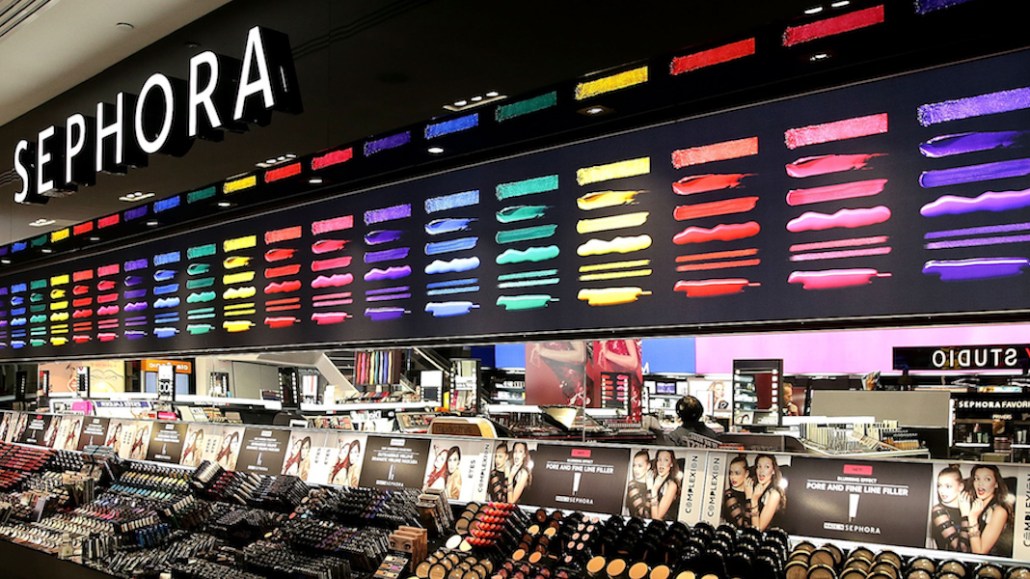Why Sephora merged its digital and physical retail teams into one department

Sephora’s retail teams have been operating differently since the company broke down one of the biggest internal barriers in October of last year, combining its in-store and digital teams. Mary Beth Laughton, who had been the company’s svp of digital since 2014, assumed a new title as evp of omni retail.
The decision was a sign of the times, said Laughton. The company had to take a step back and consider how the customer today shops, and then realign itself accordingly.
“We should be fine with wherever the customer wants to shop, and our existing organization didn’t reflect that mindset,” said Laughton. “So we brought in-store and digital under one roof, along with customer service. It’s changed the way we think about sales metrics, engagements and experiences across channels.”
Since the teams were combined, Sephora’s customer profiles have been rebuilt to include 360-degree data that tracks in-store purchases, interactions with sales people, online browsing and online purchasing. The company has rethought how it considers sales metrics, in order to trace the behavior that led up to a sale. And at the center of the strategy is mobile, which plays a role in both physical and digital retail — not to mention that customers who download the Sephora app are the most loyal.
“If a customer browsed online then bought in store, we can see that. We just weren’t looking at it before, but it’s a win for both channels,” said Laughton. “We had good relationships across our channels, but we weren’t collaborating or finding synergies, and we were maximizing business in isolation. We’re more aligned, and we can move faster across in-store, online and mobile strategies. Mobile is the glue that holds it all together.”
As sales shift online, retailers with physical stores have been figuring out how to deal with separated in-store and online sales. When there’s no communication between the two, the channel departments start to work against each other.
“We end up competing against each other a lot of the time, and that actually means that both departments run promotions just to fluff up sales for a particular quarter,” said the e-commerce manager at a fashion retailer. “If we were thinking together about how to boost sales overall, rather than working against each other, it would be a lot healthier.”
At Sephora, Laughton said that all sales and metrics are tracked within her department, while a subset of the group focuses on experiences that link the two channels together. In-store makeovers, for instance, have gotten a digital upgrade: The Sephora makeup artist working with a customer in stores will make a log in the Sephora app of every product she used in the tutorial. That’s then sent to the customer’s profile, where it can all be shopped later, online or in stores. The Sephora Virtual Artist, an in-app augmented reality tool that lets users try on different makeup looks and products virtually, can either send customers to purchase the products online or tell them where they can be found in a store.
But the biggest goal of the united team is to drive more customer loyalty by blending in-store and online loyalty perks, making better product recommendations based on what was browsed in both settings and sending smarter offers to the right customers at the right time.
“My new team brings loyalty to the forefront, since we’re better positioned to understand customers across channels,” said Laughton. “The power of using that data to better appeal to her at every touchpoint and understand her in a deeper way enables us to create these experiences that she cares about across our channels. Loyalty is a data-driven ecosystem, so that’s hugely powerful.”
More in Marketing

Pitch deck: How Amazon is recasting Twitch as a core part of its CTV pitch
Amazon is positioning Twitch as a defining asset in its CTV ambitions.

Netflix transforms former mall department stores into experiential venues
The location in Dallas opens this week, and one at the King of Prussia mall near Philadelphia opened last month.

Future of Marketing Briefing: AI has created a new talent paradox in programmatic agencies
The job isn’t execution anymore. AI handles that. The job is judgement.









